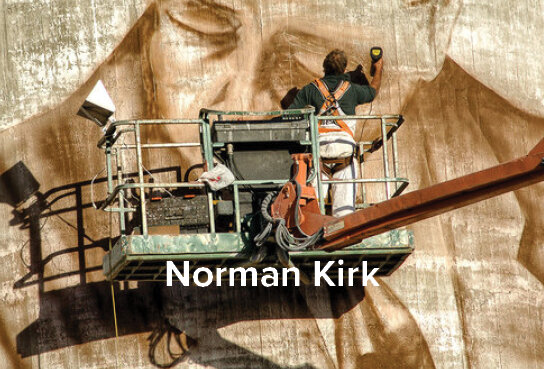Silo Art
Waimate is home to one of New Zealand’s largest pieces of street art, on the landmark Waimate Grain Silos. Two good mates - Barry Sadler, of Transport Waimate Ltd, which owns the silos, and Waimate artist Bill Scott collaborated on the project to decorate the silos with murals celebrating the town’s past. Resene Paint generously donated the paint to kick the project off. The Sadler family and Bill hope the murals will add to the pride locals have in their district, and provide another reason for visitors to make the journey off the beaten track to Waimate. The silos were built by hand in 1920 and were the first of their kind in the country. Grain silos of this height - 36m - and design are unusual, and possibly unique in New Zealand.
History
The silos were the brainchild of Robert Nicol, who who emigrated from Scotland to Dunedin in the 1870s, opened a flour mill at Naseby, and then moved to Waimate where he set up a flour mill in 1891. He learned about the Canadian technique of storing grain in silos; and when he wanted to expand production of the flour mill, he persuaded local farmers to invest in a company to build the silos for extra wheat storage.
The silos were opened by Prime Minister Bill Massey on February 12, 1921. Gas engines powered the plant using Waihao Forks coal.
Unfortunately the grain did not keep well. It’s believed that inexperience led to the silos being used too soon. The solid concrete base, almost two metres thick, would have taken up to two years to dry completely. The venture was deemed a failure and the buildings and land were sold at a loss. The silos were abandoned, but resurrected for use in the 1960s.
Viewing
Transport Waimate have set up a walkway around the edge of their yard. Enter via Queen Street, it’s clearly marked with signage. There’s also a viewing platform on Dash Street. We ask that everyone respects that Transport Waimate Ltd is an industrial work site and strictly off limits. They operate a business with big trucks and machinery, so please keep out of their yards.
For media coverage of the silos click here.
The stories behind the legends
Click on the images below to learn more about the legends depicted on the silos.





